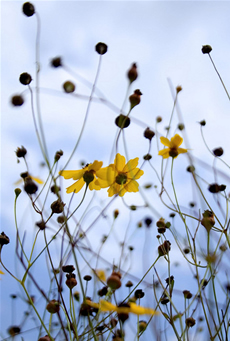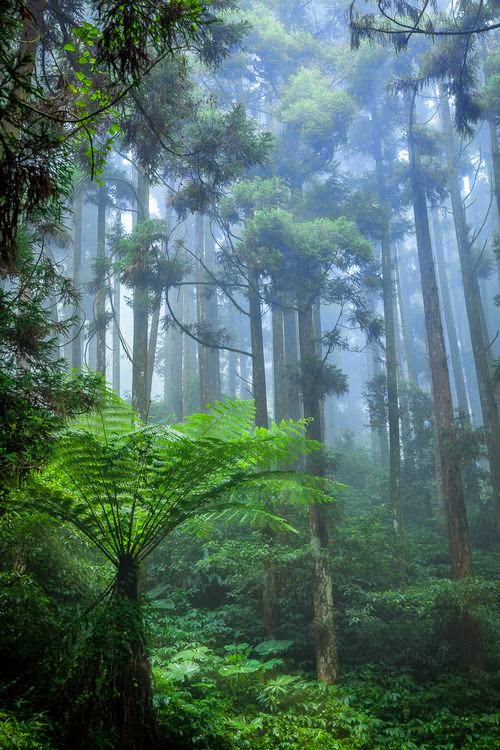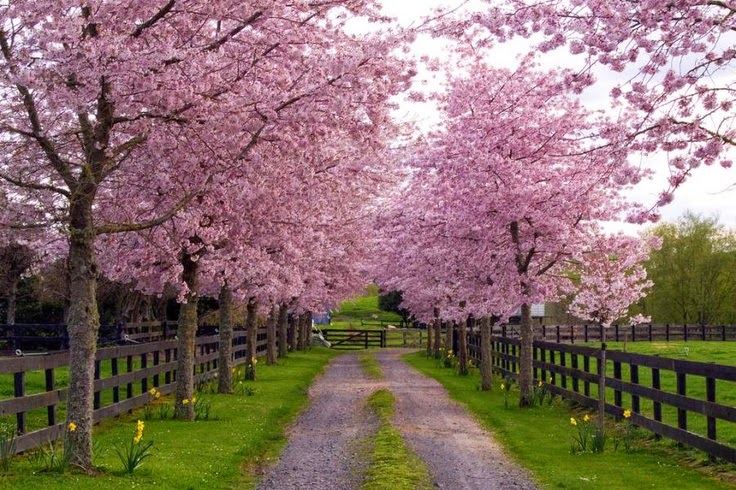Agriculture
The struggle for food, space, and pollinators in order to survive can occur between individuals of different species (interspecific competition) or between individuals of the same species (intraspecific competition).
Competition is a major driving force in evolution, the process by which living organisms change over time, with better-adapted species surviving and less well-adapted species becoming extinct.
Evolution begins with mutation, changes in the nucleotide sequence of a gene or genes, resulting in the production of slightly altered genes which encode slightly different proteins.
These altered proteins are the expressed traits of an organism and may give the organism an advantage over its competitors. The organism outcompetes its rivals in the environment, and hence the environment favors the better-adapted, fitter organism, a process called natural selection.
A mutation may help an organism in one environment but may hurt it in a different environment (for example, an albino squirrel may flourish in snowy regions but may not do as well in warm regions). Mutations are random events whose occurrence can be increased by chemicals called mutagens or by ionizing radiation such as ultraviolet light, X rays, and gamma radiation.
Species Interactions
Natural selection influences the distribution and abundance of organisms from place to place. The possible selection factors include physical factors (temperature and light, for example), chemical factors such as water and salt, and species interactions.
According to ecologist Charles Krebs, species interactions include four principal types:
Photoautotrophic organisms (plants, algae, cyanobacteria) obtain energy by converting sunlight, carbon dioxide, and water into organic molecules, a process called photosynthesis. Photoautotrophs, also called primary producers, compete for light and water.
For example, oak and hickory trees in eastern North America grow taller than most pines, thereby shading smaller species and eventually dominating a forest. A few other autotrophs, such as chemoautotrophic bacteria, obtain their energy from inorganic chemical reactions rather than from sunlight.
All other organisms?animals, zooplankton, and fungi?are heterotrophs, also called consumers; they must consume other organisms to obtain energy. Heterotrophs include herbivores, carnivores, omnivores, and saprotrophs.
Herbivores (plant eaters such as rabbits and cattle) derive their energy from eating plants. Carnivores (meat eaters such as cats and dogs) eat other heterotrophs in order to get their energy needs met. Omnivores (such as humans) eat plants and animals.
Saprotrophs (such as fungi and bacteria) decompose dead organisms to meet their energy requirements. Life on earth functions by intricately complex food chains in which organisms consume other organisms in order to obtain energy. Ultimately, almost all energy in organisms comes from the sun.
Types of Competition
Intraspecific competition occurs among individual members of the same population, for example, when sprouts grow from seeds scattered closely together on the ground. Some seedlings will be able to grow faster than others and will inhibit the growth of less vigorous seedlings by overshadowing or overcrowding them.
Interspecific competition involves two or more different species trying to use the same resources. All green plants depend on photosynthesis to derive the energy and carbon they need.
Different areas or communities favor different growth characteristics. For plants with high light requirements, a taller-growing plant (or one with more or broader leaves) will have a competitive advantage if its leaves receive more direct sunlight than competitors.
If, on the other hand, the species cannot tolerate too much sun, a shorter-growing species that can benefit from sheltering shadows of larger plants nearby will have the competitive advantage over other shade-loving plants.
Competition in nature leads to certain species dominating an environment and evolving to adapt to it, while the out competed species move elsewhere or become extinct. Humans are able to utilize the results of competition among species for their own benefit. This principle is useful in agriculture.
Certain plant species (such as sunflowers and peach trees) release chemicals into the soil that inhibit the growth of other plants that might otherwise compete with them. Plant competition can be used to fight the growth of weeds and is useful in understanding which plants are compatible.
Competition is also useful in medical microbiological research. Certain fungal species produce and secrete molecules called antibiotics, which kill bacteria. Antibiotics give these fungi an edge in their competition against bacteria. Laboratory production of these antibiotics can treat bacterial diseases in humans.
- Adaptations
Water lilies, a kind of adaptations The results of natural selection in which succeeding generations of organisms become better able to live in their environments are called adaptations. Many of the features that are most interesting and beautiful in...
- Anaerobes And Heterotrophs
AnaerobesThe first organisms to evolve on the earth are thought to have been heterotrophs and anerobes. Heterotrophs are organisms that cannot produce their own food but must fill their energy requirements by consuming organic molecules produced by other...
- Biomass Related To Energy
Biomass Related to EnergyThe relationship between the accumulation of living matter resulting from the primary production of plants or the secondary production of animals (biomass) and the energy potentially available to other organisms in an ecosystem...
- Community - Ecosystem Interactions
Ecosystems are complex organizations of living and nonliving components. They are frequently named for their dominant biotic or physical features (such as marine kelp beds or coniferous forests). Communities are groups of species usually classified according...
- Community Structure And Stability
Community Structure and StabilityAn ecological community is the assemblage of species found in a given time and place. The species composition of different ecosystems and the ways in which they maintain equilibrium and react to disturbances are manifestations...
Agriculture
Competition
 |
| Competition |
Competition is a major driving force in evolution, the process by which living organisms change over time, with better-adapted species surviving and less well-adapted species becoming extinct.
Evolution begins with mutation, changes in the nucleotide sequence of a gene or genes, resulting in the production of slightly altered genes which encode slightly different proteins.
These altered proteins are the expressed traits of an organism and may give the organism an advantage over its competitors. The organism outcompetes its rivals in the environment, and hence the environment favors the better-adapted, fitter organism, a process called natural selection.
A mutation may help an organism in one environment but may hurt it in a different environment (for example, an albino squirrel may flourish in snowy regions but may not do as well in warm regions). Mutations are random events whose occurrence can be increased by chemicals called mutagens or by ionizing radiation such as ultraviolet light, X rays, and gamma radiation.
Species Interactions
Natural selection influences the distribution and abundance of organisms from place to place. The possible selection factors include physical factors (temperature and light, for example), chemical factors such as water and salt, and species interactions.
 |
| Species Interactions |
According to ecologist Charles Krebs, species interactions include four principal types:
- Mutualism, which is the living together of two species that benefit each other (for example, fungi and algae living together as lichens); commensalism, which is the living together of two species that results in a distinct benefit (or number of benefits) to one species while the other remains unhurt (for example, plants called epiphytes that grow on other plants);
- Predation, which is the hunting, killing, and eating of one species by another (examples include insects eating plants or snails eating algae); and
- Competition, which is defined as an active struggle for survival among all the species in a given environment.
Photoautotrophic organisms (plants, algae, cyanobacteria) obtain energy by converting sunlight, carbon dioxide, and water into organic molecules, a process called photosynthesis. Photoautotrophs, also called primary producers, compete for light and water.
For example, oak and hickory trees in eastern North America grow taller than most pines, thereby shading smaller species and eventually dominating a forest. A few other autotrophs, such as chemoautotrophic bacteria, obtain their energy from inorganic chemical reactions rather than from sunlight.
All other organisms?animals, zooplankton, and fungi?are heterotrophs, also called consumers; they must consume other organisms to obtain energy. Heterotrophs include herbivores, carnivores, omnivores, and saprotrophs.
Herbivores (plant eaters such as rabbits and cattle) derive their energy from eating plants. Carnivores (meat eaters such as cats and dogs) eat other heterotrophs in order to get their energy needs met. Omnivores (such as humans) eat plants and animals.
Saprotrophs (such as fungi and bacteria) decompose dead organisms to meet their energy requirements. Life on earth functions by intricately complex food chains in which organisms consume other organisms in order to obtain energy. Ultimately, almost all energy in organisms comes from the sun.
Types of Competition
 |
| Interspecific competition |
Intraspecific competition occurs among individual members of the same population, for example, when sprouts grow from seeds scattered closely together on the ground. Some seedlings will be able to grow faster than others and will inhibit the growth of less vigorous seedlings by overshadowing or overcrowding them.
Interspecific competition involves two or more different species trying to use the same resources. All green plants depend on photosynthesis to derive the energy and carbon they need.
Different areas or communities favor different growth characteristics. For plants with high light requirements, a taller-growing plant (or one with more or broader leaves) will have a competitive advantage if its leaves receive more direct sunlight than competitors.
 |
| certain species dominating an environment |
If, on the other hand, the species cannot tolerate too much sun, a shorter-growing species that can benefit from sheltering shadows of larger plants nearby will have the competitive advantage over other shade-loving plants.
Competition in nature leads to certain species dominating an environment and evolving to adapt to it, while the out competed species move elsewhere or become extinct. Humans are able to utilize the results of competition among species for their own benefit. This principle is useful in agriculture.
Certain plant species (such as sunflowers and peach trees) release chemicals into the soil that inhibit the growth of other plants that might otherwise compete with them. Plant competition can be used to fight the growth of weeds and is useful in understanding which plants are compatible.
 |
| peach trees release chemicals into the soil that inhibit the growth of other plants |
Competition is also useful in medical microbiological research. Certain fungal species produce and secrete molecules called antibiotics, which kill bacteria. Antibiotics give these fungi an edge in their competition against bacteria. Laboratory production of these antibiotics can treat bacterial diseases in humans.
- Adaptations
Water lilies, a kind of adaptations The results of natural selection in which succeeding generations of organisms become better able to live in their environments are called adaptations. Many of the features that are most interesting and beautiful in...
- Anaerobes And Heterotrophs
AnaerobesThe first organisms to evolve on the earth are thought to have been heterotrophs and anerobes. Heterotrophs are organisms that cannot produce their own food but must fill their energy requirements by consuming organic molecules produced by other...
- Biomass Related To Energy
Biomass Related to EnergyThe relationship between the accumulation of living matter resulting from the primary production of plants or the secondary production of animals (biomass) and the energy potentially available to other organisms in an ecosystem...
- Community - Ecosystem Interactions
Ecosystems are complex organizations of living and nonliving components. They are frequently named for their dominant biotic or physical features (such as marine kelp beds or coniferous forests). Communities are groups of species usually classified according...
- Community Structure And Stability
Community Structure and StabilityAn ecological community is the assemblage of species found in a given time and place. The species composition of different ecosystems and the ways in which they maintain equilibrium and react to disturbances are manifestations...
